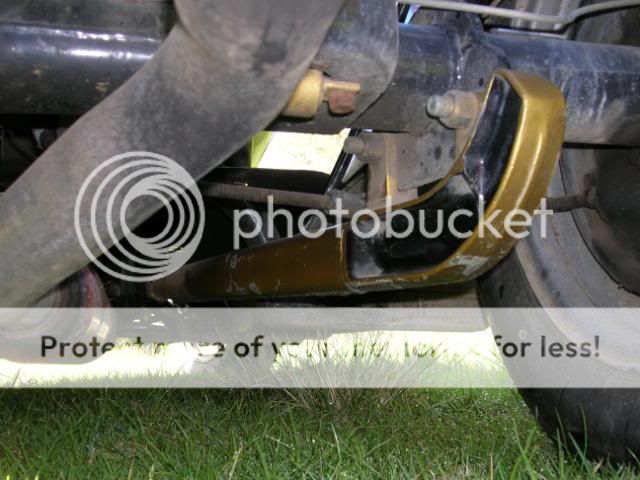Hi Ron,
Thanks for the rear axle bracket idea. I knew the housings where thin, but I didn't know they where that thin. It never occurred to me to just split the bracket. How simple is that!
And please know I completely respect your views. And if I start to sound authoritative about anything, you have permission to pull the rug out.
I was going to make a post about the project, so I'll just do it here.
One thing I'm trying to decide is the final working lengths for the front and rear wishbones. I define working length as the distance from the center of the axle, to the center of the chassis mounting point. This idea applies to both front and rear.
Now this dimension is ideally determined AFTER you have your body, engine, steering box, wheels, and...... Lay things out on the floor and see how things fit. But, I don't have anything yet, so I need to try and just guesstimate at all of this.
I'm always inspired by Ex Junks car. Anyway, a Photochop of something his son did caught my eye. I like the proportions of the concept, so I just used it to try and get an idea of lengths for my bars. I hope you don't mind Jim, but I stole this image and fiddled with it a bit. I'm not an artist by any means, but here is my rough modified version of what his son did:

I used the "Gimp" to add some fake white wishbones to the picture. I also placed a steering arm in the cowl. After seeing the look of Track-T's car, I really want cowl steering! I also want the two chassis end connecting points for the wishbones to fall just below the centerline of the steering arm. I'm thinking that would help keep the bump steer demon at bay. I always thought the long wishbone look was cool as well.
Assuming a 108" to 109" long wheelbase in the image, I calculate the front wishbone will have a working length of about 44" long, and the rear to be about 58" long.
What do you guys think? Gals? Do we have any female members yet?
Take care all,
David
Thanks for the rear axle bracket idea. I knew the housings where thin, but I didn't know they where that thin. It never occurred to me to just split the bracket. How simple is that!
And please know I completely respect your views. And if I start to sound authoritative about anything, you have permission to pull the rug out.
I was going to make a post about the project, so I'll just do it here.
One thing I'm trying to decide is the final working lengths for the front and rear wishbones. I define working length as the distance from the center of the axle, to the center of the chassis mounting point. This idea applies to both front and rear.
Now this dimension is ideally determined AFTER you have your body, engine, steering box, wheels, and...... Lay things out on the floor and see how things fit. But, I don't have anything yet, so I need to try and just guesstimate at all of this.
I'm always inspired by Ex Junks car. Anyway, a Photochop of something his son did caught my eye. I like the proportions of the concept, so I just used it to try and get an idea of lengths for my bars. I hope you don't mind Jim, but I stole this image and fiddled with it a bit. I'm not an artist by any means, but here is my rough modified version of what his son did:

I used the "Gimp" to add some fake white wishbones to the picture. I also placed a steering arm in the cowl. After seeing the look of Track-T's car, I really want cowl steering! I also want the two chassis end connecting points for the wishbones to fall just below the centerline of the steering arm. I'm thinking that would help keep the bump steer demon at bay. I always thought the long wishbone look was cool as well.
Assuming a 108" to 109" long wheelbase in the image, I calculate the front wishbone will have a working length of about 44" long, and the rear to be about 58" long.
What do you guys think? Gals? Do we have any female members yet?
Take care all,
David













